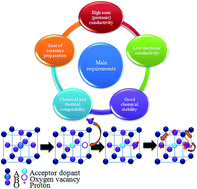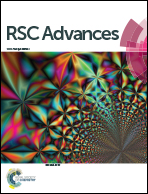Recent activity in the development of proton-conducting oxides for high-temperature applications
Abstract
High-temperature proton-conducting materials constitute a unique class of oxide materials, which are able to exhibit protonic conductivity under hydrogen-containing atmospheres. Besides being of great fundamental interest, such oxide systems possess practical significance because they can achieve high protonic conductivity levels. This opens the possibility of using proton-conducting materials as electrolytes for a wide range of intermediate- and high-temperature solid oxide electrochemical devices. Recent advances in the field of solid oxide proton-conducting materials that belong to the class of perovskite-based materials (such as doped BaCeO3, BaZrO3, BaCeO3–BaZrO3, SrCeO3, and LaScO3) and to other classes of materials (such as doped Ba2In2O5, CeO2, and LaNbO4) are presented and analyzed in this review. In order to highlight the most appropriate materials for applications in electrochemical devices, the analysis is devoted to the establishment of correlations between compositional and structural characteristics and their transport, thermal and stability properties.



 Please wait while we load your content...
Please wait while we load your content...